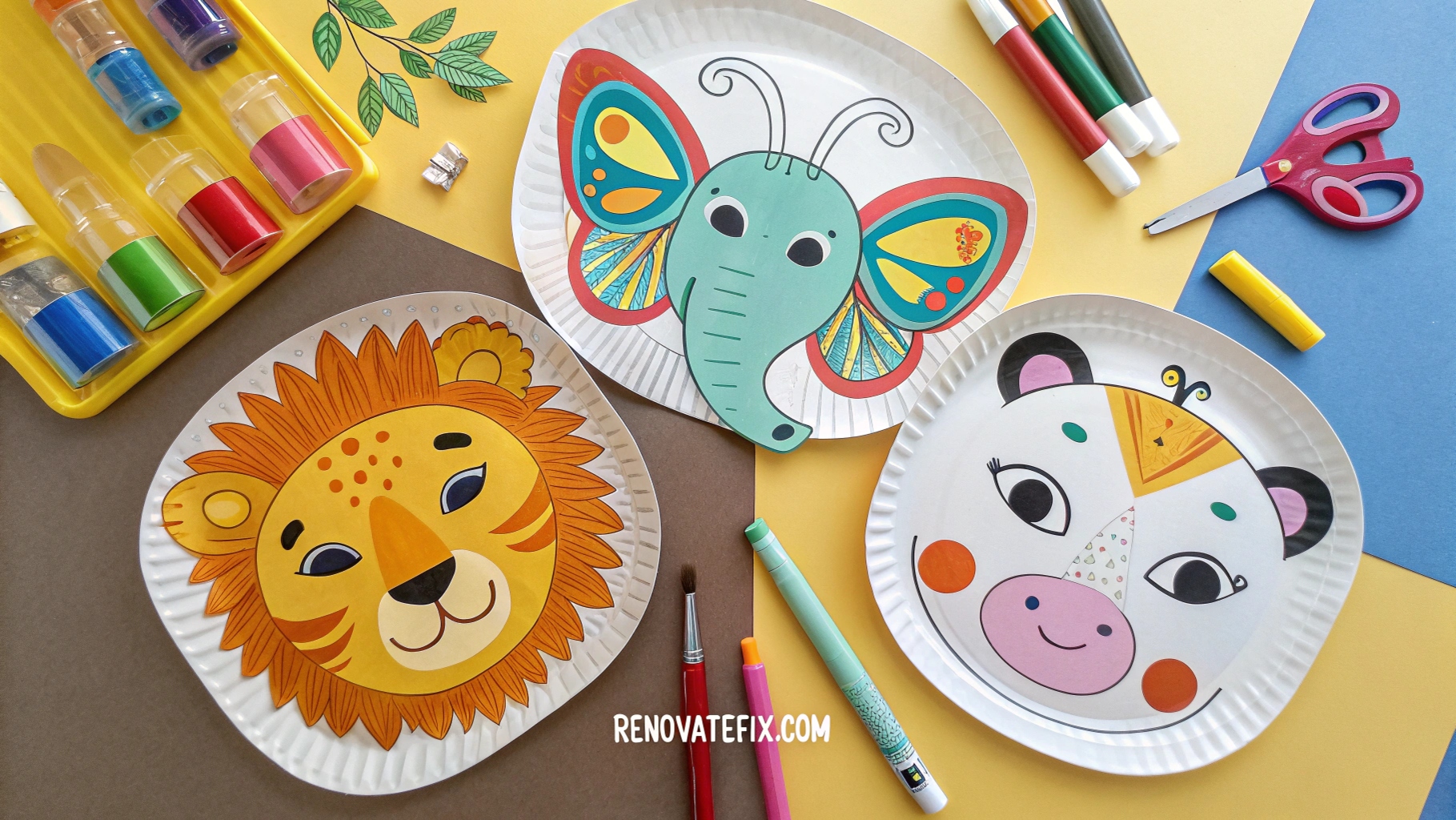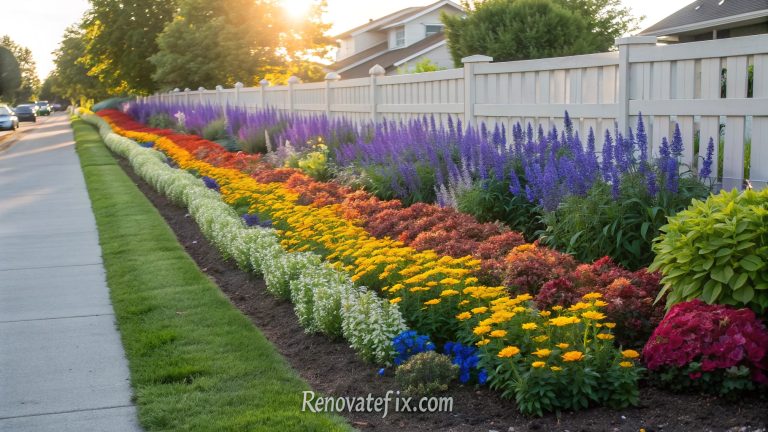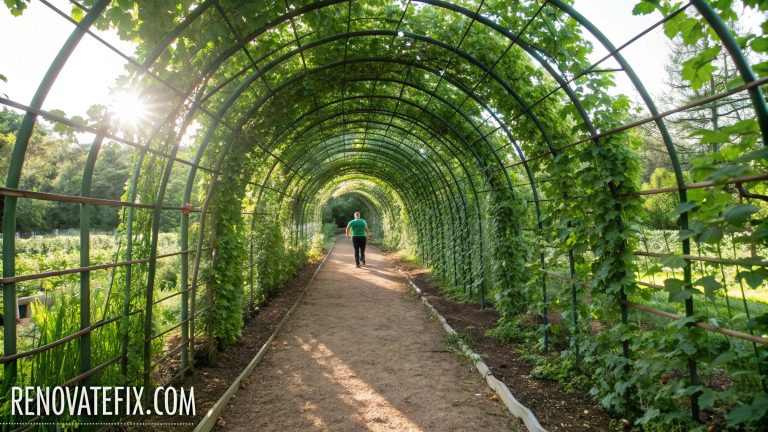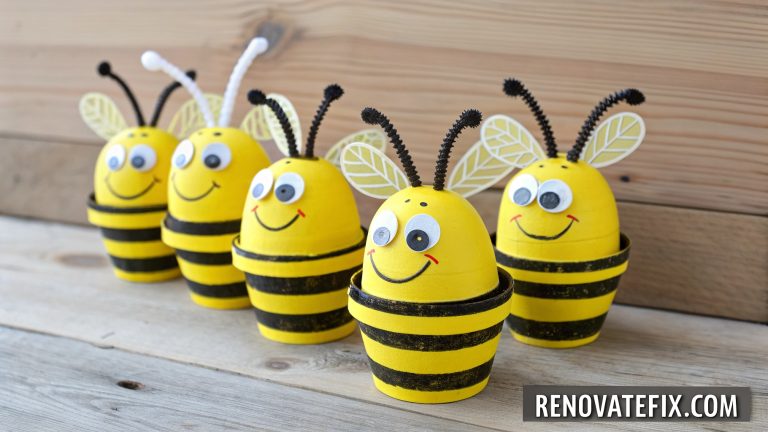15 Engaging Craft Activities for Kids That Spark Creativity
Crafting offers children a wonderful opportunity to express themselves while developing essential motor skills and boosting confidence.
When youngsters engage in hands-on creative projects, they learn patience, problem-solving, and gain immense satisfaction from making something with their own hands.
This collection presents fifteen fantastic craft activities perfect for various age groups, using materials you likely already have at home or can easily obtain.
From nature-inspired creations to recyclable art projects, these activities promise hours of entertainment while nurturing artistic abilities and imagination in your little ones.
1. Painted Rock Garden Markers
Creating painted rock garden markers allows kids to combine art with nature appreciation.
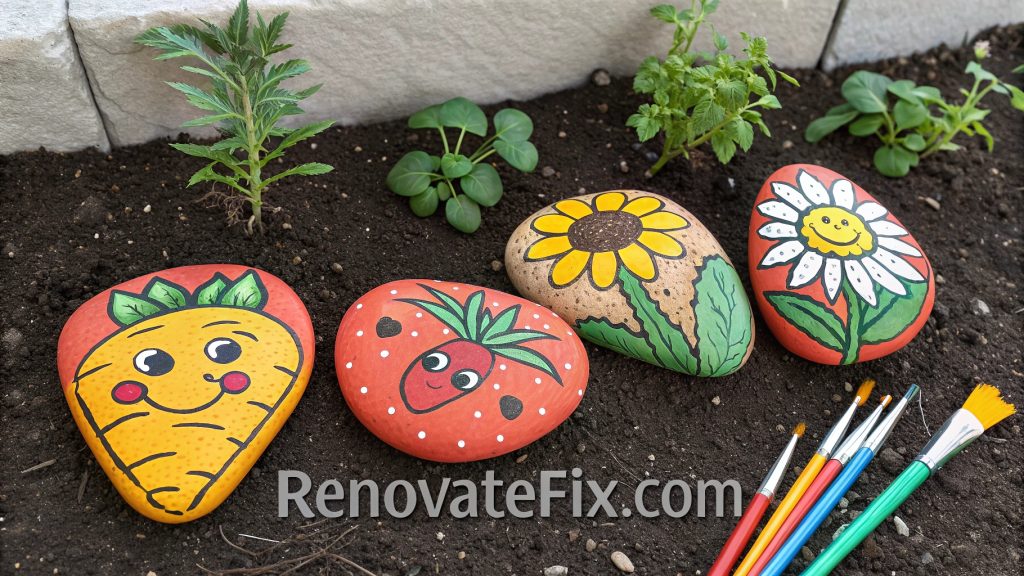
Children can gather smooth stones from outdoors, wash them thoroughly, then use acrylic paints to depict vegetables, fruits, flowers, or insects that might visit a garden.
Once dry, apply a clear sealant to weatherproof these artistic markers before placing them in your garden beds or potted plants, giving youngsters pride every time they see their handiwork among growing greenery.
2. Paper Plate Animal Masks
Paper plate animal masks offer an excellent way for kids to explore role-playing while crafting.
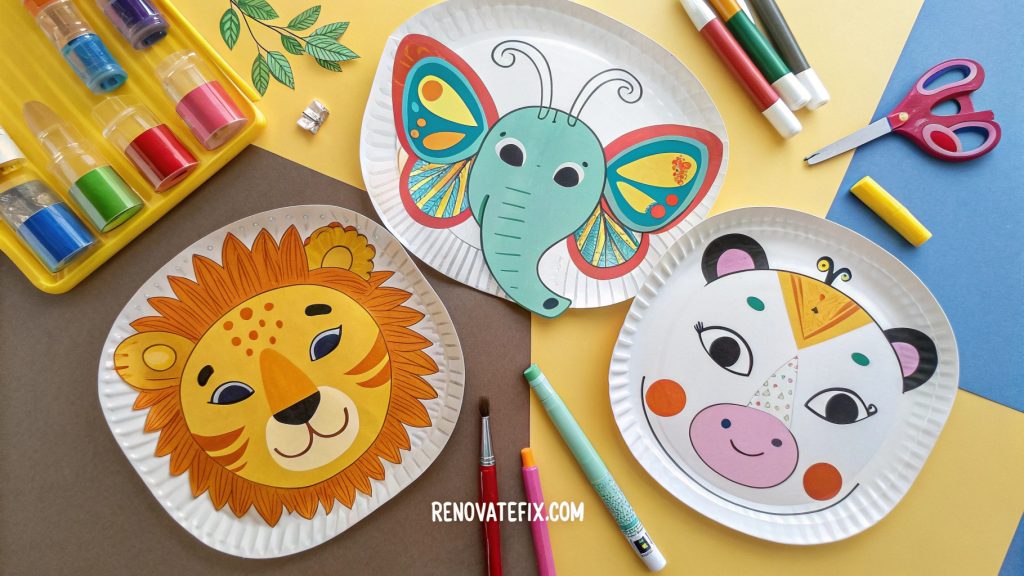
Begin with plain white paper plates, cut eye holes for visibility, then supply children with paint, markers, construction paper, feathers, and pipe cleaners to fashion their favorite creatures.
Lions with yarn manes, elephants with trunk extensions, or peacocks with vibrant tail feathers allow youngsters to showcase personality through animal personas they create and wear.
3. Homemade Playdough Sculptures
Homemade playdough sculptures provide tactile enjoyment while encouraging three-dimensional thinking.
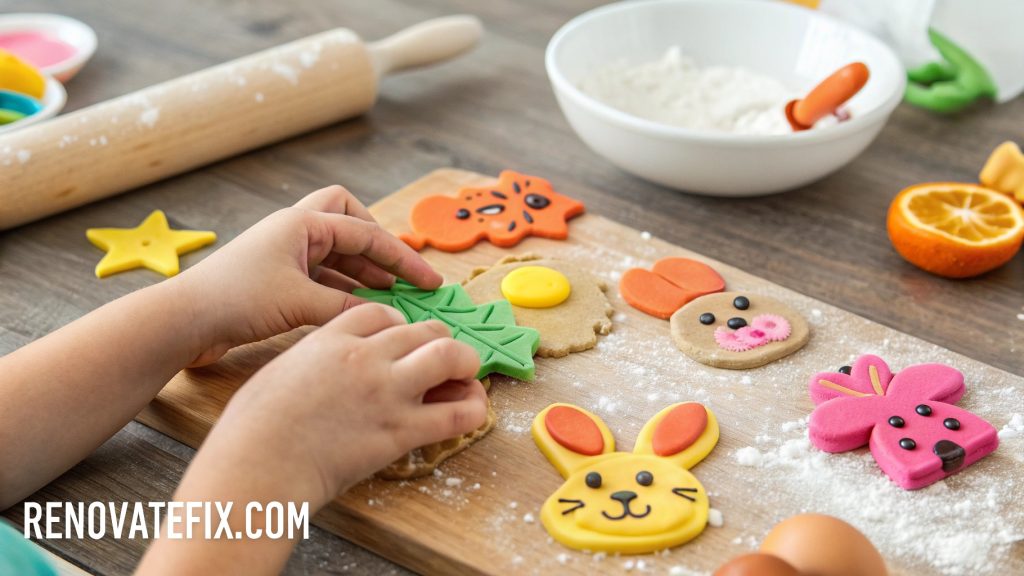
Mix flour, salt, cream of tartar, water, oil, and food coloring to produce soft, pliable dough perfect for little hands to mold into imaginative shapes.
Children can build miniature animals, fantasy creatures, or abstract sculptures, allowing them unlimited creative possibilities without expensive materials, plus parents appreciate how this natural dough lacks harmful chemicals found in commercial versions.
4. Cardboard Box City
Building a cardboard box city recycles packaging into an impressive play environment.
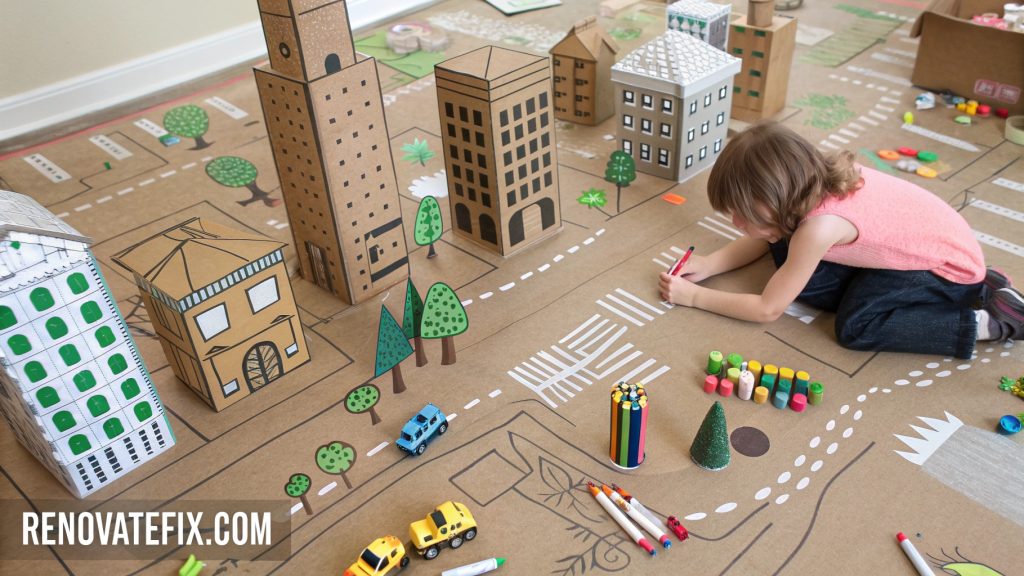
Collect various sized boxes—from cereal containers to shipping cartons—and help children cut windows, doors, and other architectural features before painting exteriors to represent houses, shops, schools, and community buildings.
Add details like bottle cap wheels on cars, popsicle stick benches, and paper trees to complete neighborhood scenes that foster storytelling skills during hours of imaginative play.
5. Yarn Wrapped Letters
Yarn wrapped letters make beautiful bedroom decorations while teaching wrapping techniques and color patterns.

Purchase wooden or cardboard letters representing children’s names or meaningful words, then demonstrate how to apply glue in sections before wrapping colorful yarn around each letter.
Kids can alternate hues, create ombré effects, or add small embellishments like buttons or sequins for personalized room décor they proudly display above beds or on bookshelves.
6. Bird Feeder Workshop
A bird feeder workshop connects children with wildlife while practicing construction skills. Using pine cones, peanut butter, birdseed, and hanging string, kids can spread nut butter over cones before rolling them in seed mixtures.
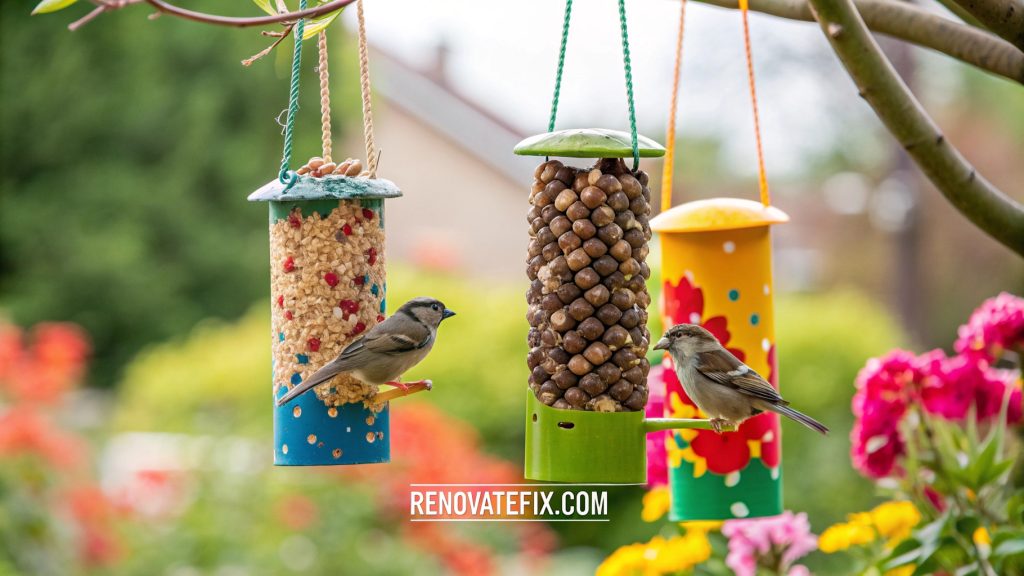
Alternatively, repurpose milk cartons or plastic bottles by cutting feeding holes, adding perches from wooden dowels, and decorating exteriors with weather-resistant paint before filling with birdseed.
Creating functional outdoor décor that attracts feathered visitors for observation.
7. Marbled Paper Art
Marbled paper art introduces kids to fascinating chemical reactions through artistic expression.
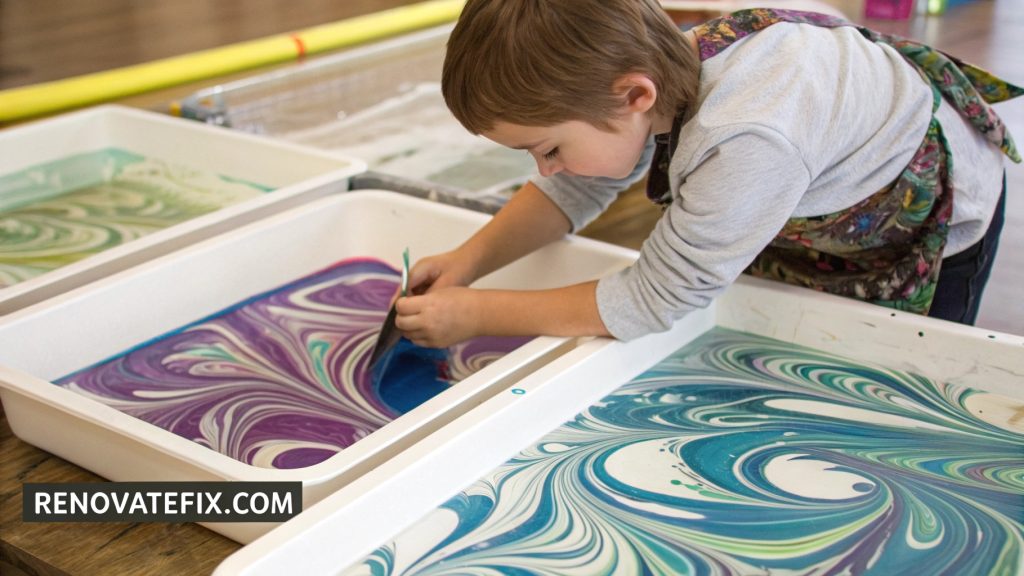
Fill shallow trays with water, add drops of oil-based food coloring or nail polish, then swirl colors gently with toothpicks creating mesmerizing patterns.
When paper touches liquid surface briefly before lifting, unique marbling transfers onto sheets suitable for crafting greeting cards, book covers, or framed artwork—each piece completely original with swirling rainbow hues never precisely repeatable.
8. Puppet Making Station
A puppet making station encourages storytelling alongside artistic development. Provide paper bags, old socks, wooden spoons, or felt sheets as puppet bases, then supply googly eyes, yarn hair, fabric scraps, and markers for character creation.
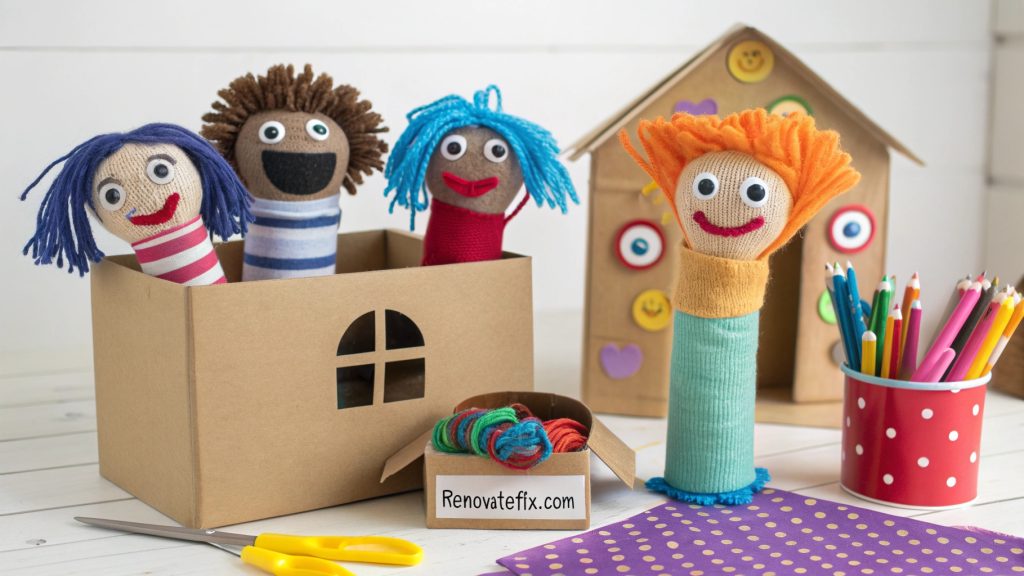
Children can fashion animals, people, monsters, or fantasy beings before putting on performances behind makeshift cardboard theaters.
Developing narrative skills and confidence speaking while manipulating their handcrafted puppets during family entertainment nights.
9. Nature Suncatchers
Creating nature suncatchers helps children appreciate outdoor treasures through beautiful window hangings.

During nature walks, collect colorful leaves, flower petals, small feathers, or interesting grasses, then sandwich findings between adhesive contact paper circles.
Add string loops before sealing edges, allowing sunlight to illuminate natural elements when hung near windows—changing throughout seasons as kids replace materials with new discoveries from outdoor adventures.
10. Fabric Scrap Collage
A fabric scrap collage introduces textile art concepts while practicing cutting and composition. Gather fabric remnants in various colors, patterns, and textures before helping children cut or tear pieces into shapes for arranging on cardboard backing.
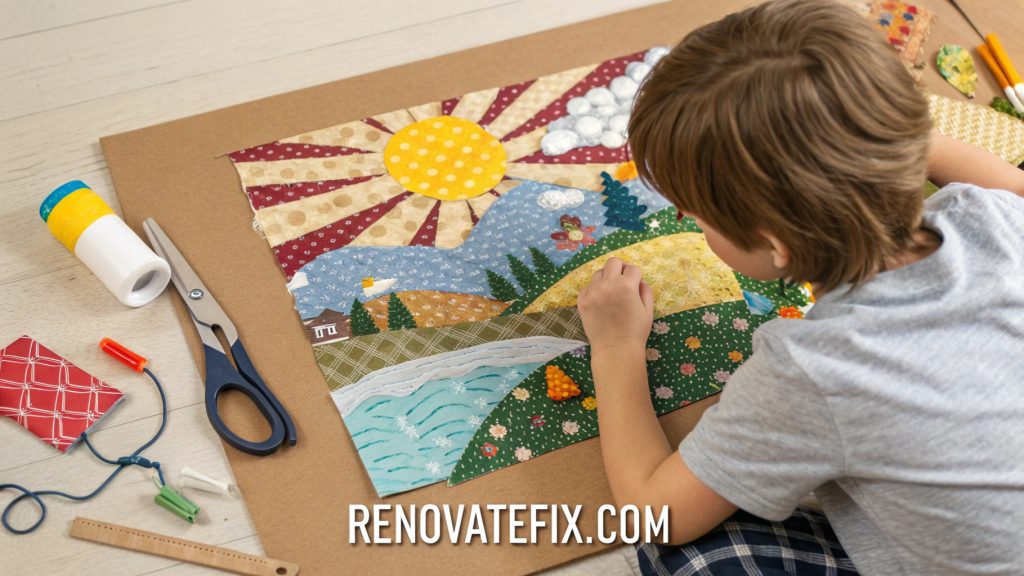
Apply white glue to secure fabric elements in pictorial scenes, abstract designs, or patchwork patterns—creating dimensional artwork with tactile qualities unlike paper projects while learning about material properties and visual arrangements.
11. Clay Leaf Bowls
Clay leaf bowls combine natural impressions with functional pottery. Children roll air-dry clay into flat circles before pressing actual leaves onto surfaces, creating detailed vein patterns when gently removed.
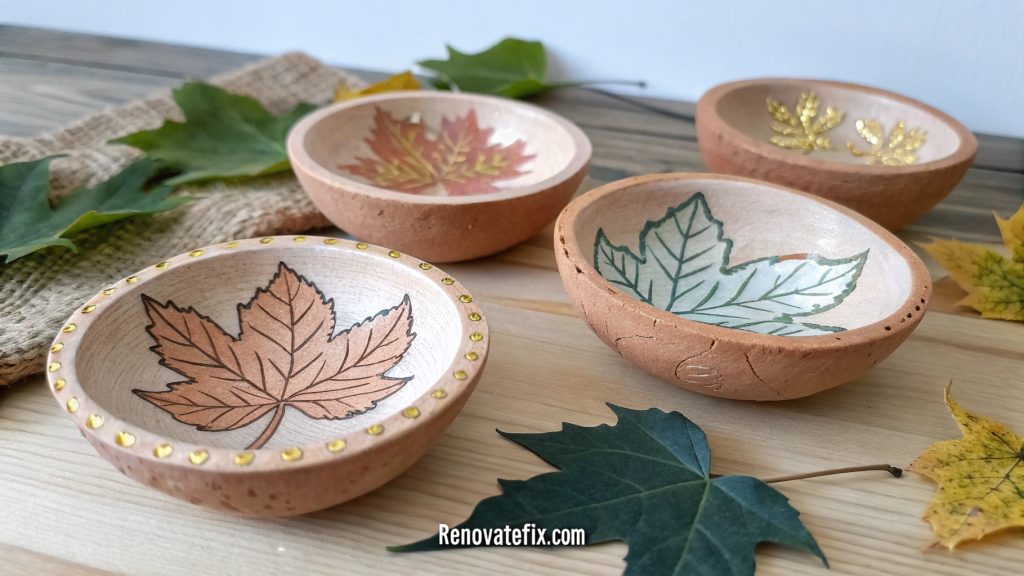
Folding clay edges upward forms shallow dishes perfect for holding small treasures after drying overnight.
Kids can paint finished bowls with metallic or pastel colors highlighting leaf impressions before displaying these botanical keepsakes or gifting to grandparents as handmade presents.
12. Bottle Cap Magnets
Bottle cap magnets recycle everyday objects into charming refrigerator decorations. Clean metal caps from soda or juice bottles provide perfect circular frames for miniature artwork.

Kids fill interiors with drawings, photos, tiny collages, or painted designs before covering with clear epoxy and attaching magnetic strips to backs.
These personalized magnets hold notes on metal surfaces while showcasing microscopic masterpieces, teaching children about repurposing materials otherwise destined for trash bins.
13. Woven Paper Placemats
Woven paper placemats introduce basic textile concepts through accessible materials. Cut construction paper into long strips of various colors, then demonstrate simple over-under weaving patterns on contrasting base sheets.
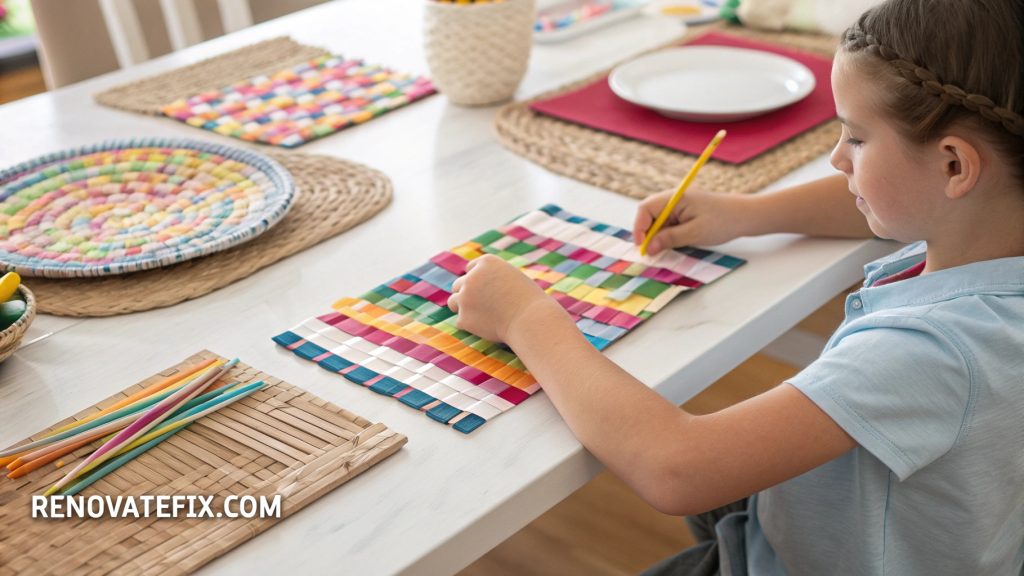
Children practice counting, pattern recognition, and manual dexterity while creating functional table décor.
Laminate finished placemats for durability during meals, allowing kids pride serving family dinners atop their handcrafted woven creations.
14. Shadow Puppet Theater
A shadow puppet theater blends crafting with dramatic play. Help children cut silhouette shapes from cardboard representing characters from favorite stories or original tales.
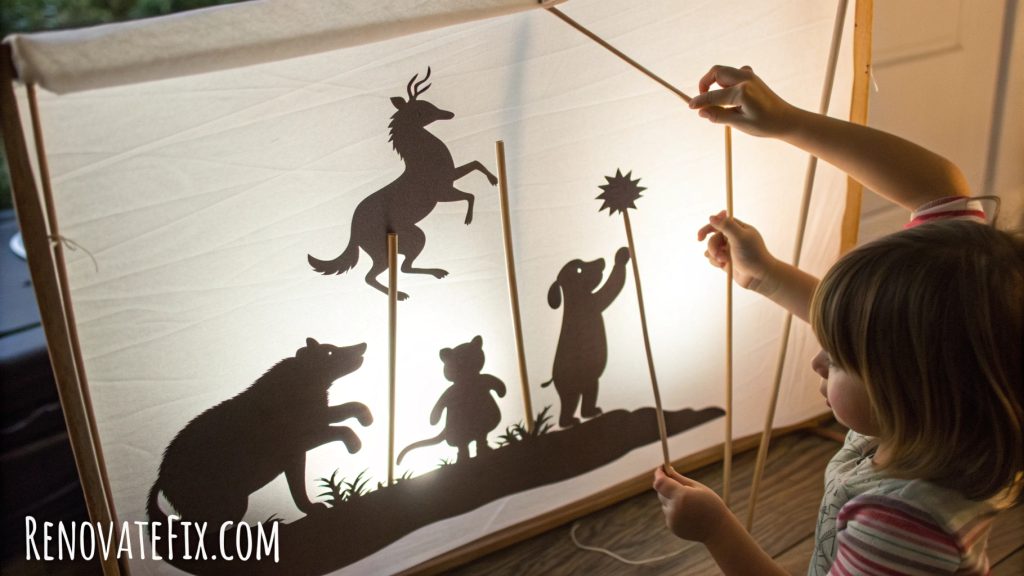
Attach popsicle sticks as handles, then stretch white fabric across cardboard box opening to create projection screen.
When flashlight shines behind puppets, shadows cast magical displays for storytelling performances that combine visual arts with narrative development—encouraging collaboration when multiple children operate different character puppets.
15. Bubble Print Artwork
Bubble print artwork produces astonishing patterns through playful process. Mix dish soap, water, and food coloring in small containers, provide straws for blowing bubbles until rising above container rims.
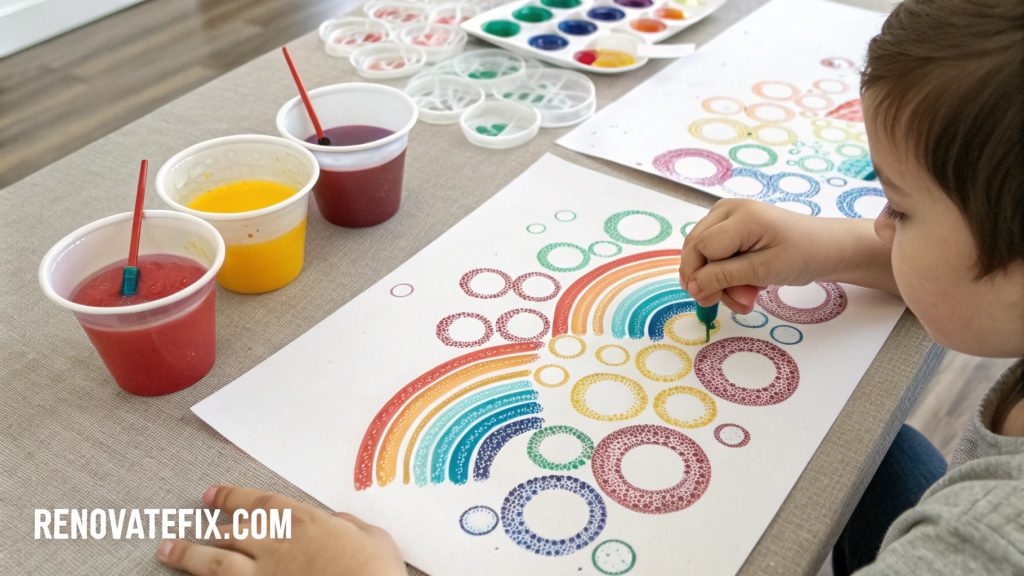
Then press paper gently atop bubbles. When bubbles pop, they leave circular imprints in fascinating arrangements impossible to create with brushes.
Multiple colors create rainbow effects perfect for greeting cards, wrapping paper, or framed abstract art—proving beautiful creations sometimes emerge from simplest activities.
Conclusion
These fifteen craft activities offer wonderful starting points for creative exploration with children.
Beyond producing charming handmade items, these projects build confidence, develop fine motor coordination, and foster problem-solving abilities that benefit kids across all learning areas.
Most importantly, crafting together creates precious bonding moments between adults and children, establishing creative habits likely to continue throughout their lives.
Remember that perfect results matter less than enjoyable process—praise effort and innovation rather than precision, allowing each child’s unique artistic voice to emerge through these engaging hands-on experiences.

